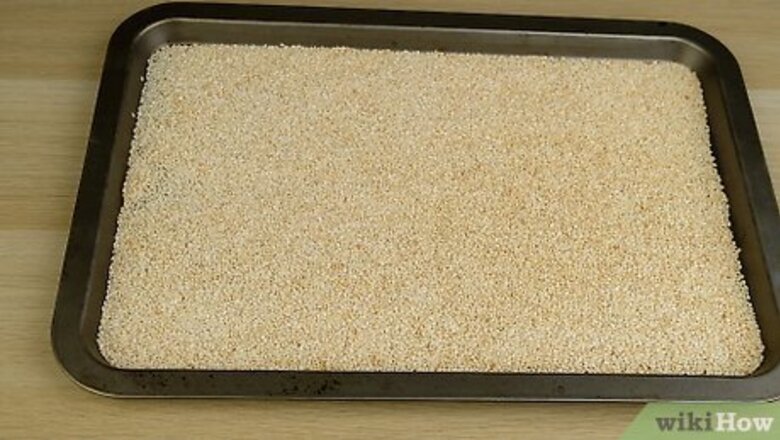
views
Eating Whole Seeds
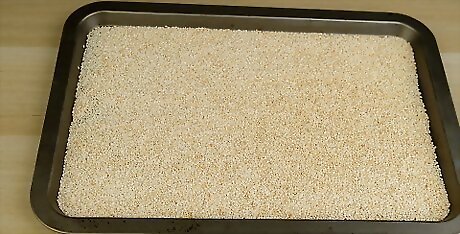
Toast raw sesame seeds to give them a nuttier aroma and flavor. Raw sesame seeds are fine to use as-is, but toasting them is an easy way to ramp up their flavor profile. Buy toasted sesame seeds at the grocery store, or make your own in the oven or on the stovetop. To toast sesame seeds in the oven, spread the raw seeds evenly over an ungreased baking sheet. Bake them at 350 °F (177 °C) until they’re lightly browned and have a nutty aroma. This usually takes 5-15 minutes. To toast sesame seeds on the stovetop, spread the raw seeds evenly in a large ungreased skillet. Cook the seeds over medium-low heat until they turn light brown and give off a nutty scent. This typically takes only 2-3 minutes. Move the skillet constantly so that the seeds wouldn’t burn. As the skillet is getting heated, the seeds may start popping out of it. Consider using a mesh splatter screen to cover it. Store the toasted seeds in a tightly-sealed container and stash them in the refrigerator (for up to 6 months) or freezer (for up to 1 year). So long as the seeds don’t give off a rancid smell, they’re still fine to use.
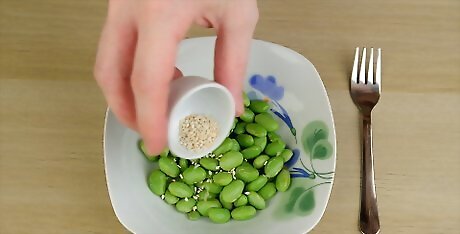
Sprinkle seeds over your favorite veggie and bean side dishes. Sesame seeds add a subtle, satisfying, and healthy crunch to steamed broccoli, sauteed green beans, and a range of other side dishes. Simply sprinkle on raw or toasted sesame seeds right before serving—that way, the seeds will retain their crunch.
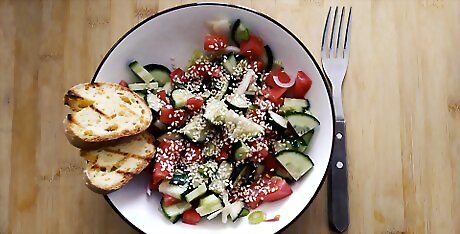
Give your salad a nutty crunch with a pinch of sesame seeds. Assemble your favorite salad as normal and toss in the dressing. To top things off, add the sesame seeds to the salad just before digging in so they stay crunchy. Toasted sesame seeds provide a nuttier flavor, but raw seeds also make a great salad topping.
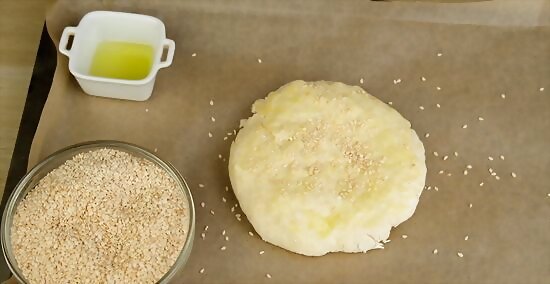
Put sesame seeds on top of—or mix them into—homemade baked goods. Topping homemade baked goods with sesame seeds adds visual appeal and a subtle nutty flavor. Right before baking the shaped dough, spray or brush it with a small amount of water. Sprinkle on the sesame seeds and bake as directed by your recipe. Alternatively, try mixing sesame seeds right into your bread dough! You can also do this with cookie doughs and cake batters. The texture of the small seeds will be barely noticeable, but they’ll impart a slight nuttiness to the finished product.
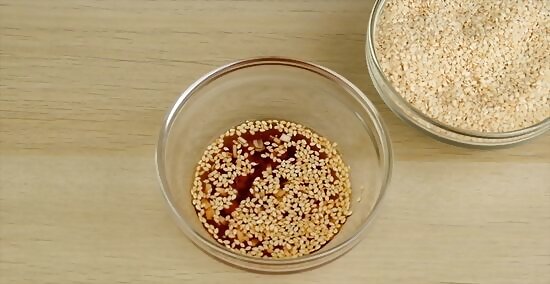
Create a quick multi-purpose dressing that includes sesame seeds. Add equal amounts of rice wine vinegar and soy sauce to a mixing bowl—you can adjust the ratio according to taste. Whisk in crushed garlic and toasted sesame seeds, again according to taste. Try this dressing on salads, steamed veggies, and noodle dishes. Search online for many other dressing recipes that feature sesame seeds.
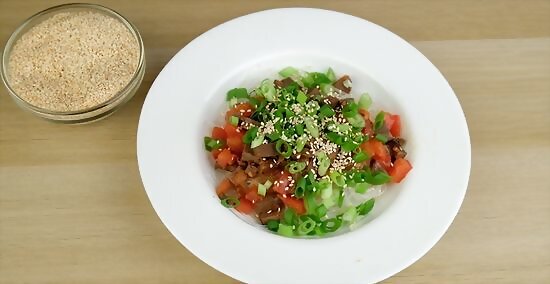
Add sesame seeds to Asian-inspred stir fry dishes. Top your finished stir fry with toasted sesame seeds, or add toasted or untoasted seeds to the stir fry during the last 1-2 minutes of cooking. Or do both! For example, try creating a stir fry that includes chicken, soy sauce, garlic, ginger, your favorite stir fry veggies, and sesame seeds.
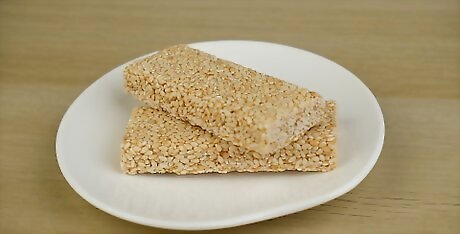
Enjoy sweet sesame seed treats like sesame brittle. Many cookies, candies, and pastries utilize sesame seeds as a featured ingredient. Sesame brittle is one of the simplest—and most delicious—options: Add sugar and honey in a 3:1 ratio (3 times as much sugar as honey) to a saucepan and heat it on medium, stirring often, until completely combined. Add sesame seeds in an amount equal to the sugar-honey mixture (for example, 3/4 cup of sugar, 1/4 cup of honey, and 1 cup of seeds) to the saucepan and stir them frequently until the mixture reads 300 °F (149 °C) on a candy thermometer. Pour the mixture onto a lined baking sheet and let it cool and harden for 15-20 minutes. Then, break it into pieces and enjoy!
Using Sesame Paste, Flour, or Oil
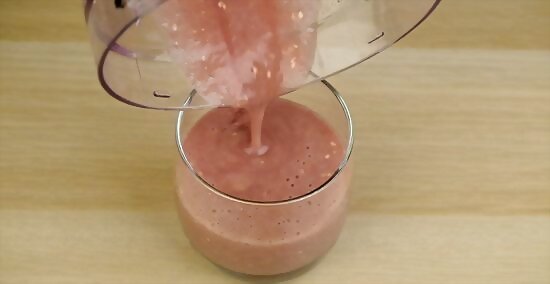
Blend a spoonful of seeds into your go-to smoothie recipe. Sesame seeds have a fairly mild flavor that complements any combination of fruits and veggies in a smoothie. Because of their small size, the seeds also break down easily in a blender—they’ll add some texture, but not grittiness, to your smoothie. If you like to sweeten up your smoothie a bit more, try honey, which pairs exceptionally well with sesame seeds.
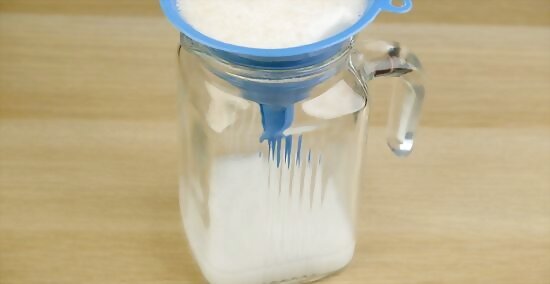
Whip up homemade sesame milk with just seeds and water. Soak 1 c (approx. 150 g) of raw sesame seeds in 2 c (470 ml) of water overnight in the refrigerator. Combine the mixture in a blender until smooth. Strain the milk through cheesecloth, if desired, to enhance the texture, or use it as-is to maximize the fiber and beneficial nutrients. Store the milk in the fridge and use it that same day for the best results.
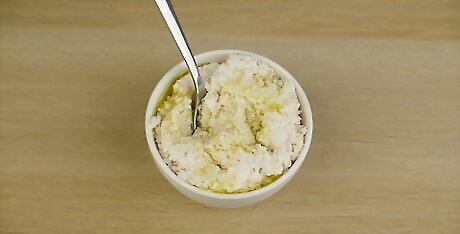
Make your own tahini for use in hummus and other recipes. Add 1 c (approx. 150 g) of sesame seeds and 2 tbsp (30 ml) of a mild-flavored olive oil to a blender or food processor. Combine the ingredients for 2-3 minutes until they form a smooth paste. Add more oil and continue blending for another 30-60 seconds if you prefer a thinner tahini. Add salt to taste, if desired. Use raw or toasted sesame seeds. Toasted seeds will give your tahini a nuttier flavor. Instead of olive oil, try combining 1 1/2 tbsp (22.5 ml) of a neutral-flavored vegetable oil (like grapeseed oil) with 1/2 tbsp (7.5 ml) of sesame oil. Store the tahini in a sealed container in the refrigerator for up to 1 month.
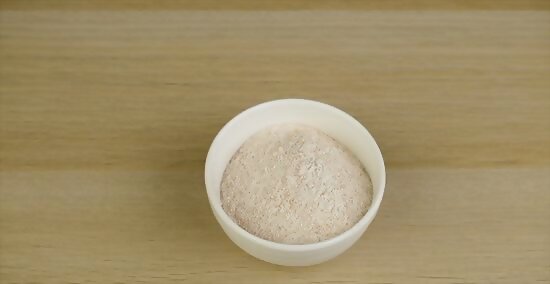
Substitute sesame flour for some of the wheat flour in recipes. If your recipe calls for all-purpose (wheat) flour, you can substitute 1/4 of the total amount with sesame flour without impacting the finished result. If anything, you might notice the addition of a slight nutty flavor to the finished product! For example, if your recipe calls for 1 c of all-purpose flour, you can use 3/4 c of all-purpose flour and 1/4 c of sesame flour. Or, if your recipe calls for 200 g of all-purpose flour, you can use 150 g of all-purpose flour and 50 g of sesame flour.
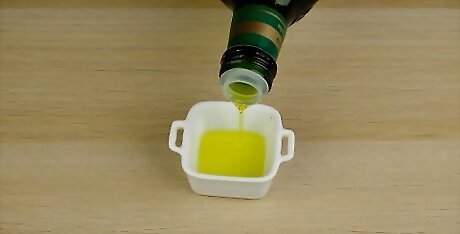
Use sesame oil for everything from stir fry dishes to salad dressings. Sesame seeds are high in (healthy) oil content, and sesame oil contains many of the same nutrients found in the whole seeds. Sesame oil has a mild flavor that is suited to a wide range of uses, and also has a high smoke point, which makes it ideal for high-temperature cooking like stir frying. Buy sesame oil at your favorite store, or try your hand at making your own! Sesame oils that are lighter in color are best for cooking, while those that are darker in color are best for dressings.
















Comments
0 comment